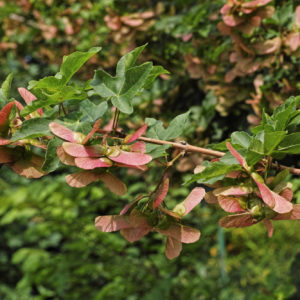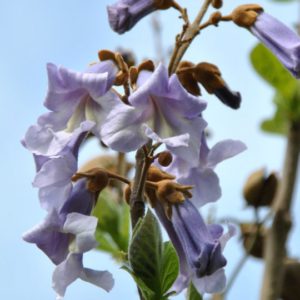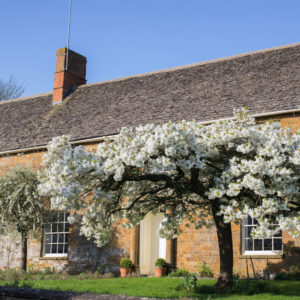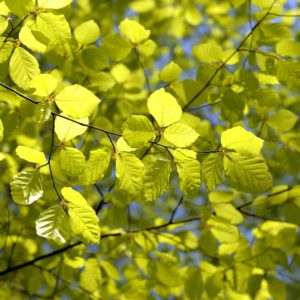Broussonetia papyrifera
Price range: €280.00 through €350.00
Frequently Bought Together


Description
Quick Facts
- Common Name: Paper Mulberry, Tapa Cloth Tree
- Botanical Name: Broussonetia papyrifera
- Plant Type: Deciduous tree
- Mature Height: 10-15m
- Mature Spread: 8-12m
- Flowering Period: May to June
- Flower Colour: Male: yellow-green catkins; Female: spherical purple-red flowers
- Foliage: Large ovate to deeply lobed leaves, rough-textured, mid-green turning yellow in autumn
- Hardiness: RHS H5 (hardy in most areas)
- Soil Requirements: Moist, well-drained, tolerates most soil types
- Aspect: Full sun to partial shade
- Maintenance: Low to moderate
Description
Discover the extraordinary character of Broussonetia papyrifera, the fascinating Paper Mulberry that brings exceptional architectural presence, bold textural interest, and historic significance to with its dramatically large leaves and unusual flowers. This outstanding ornamental tree offers remarkable qualities—large, rough-textured leaves measuring 10-20cm long that create bold tropical effect and dramatic presence, extraordinary leaf variation with some leaves entire and ovate whilst others are deeply lobed with 3-5 lobes on the same tree creating fascinating textural diversity, unusual and distinctive flowers with male trees producing pendulous yellow-green catkins and female trees bearing spherical purple-red flowers that develop into orange-red spherical fruits, and fast growth with spreading habit and attractive mottled grey-brown bark, making this one of the most distinctive and conversation-worthy trees for creating bold architectural impact, exotic character, and historic interest.
Throughout spring and summer, this captivating tree displays its characteristic large leaves with remarkable variation—some leaves are simple and ovate with heart-shaped bases, whilst others on the same tree are deeply lobed with 3-5 finger-like lobes, creating fascinating textural diversity. The leaves measure 10-20cm long with rough, sandpaper-like upper surfaces and softer, hairy undersides in mid to bright green. This rough texture is distinctive and adds tactile interest. The large leaves create bold, almost tropical effect despite the tree’s temperate origins. In late spring to early summer, the unusual flowers appear—male trees produce pendulous yellow-green catkins measuring 5-8cm long, whilst female trees (less common) bear spherical purple-red flowers that develop into distinctive orange-red spherical fruits measuring 2-3cm across. The fruits are edible but rather bland. The spreading, rounded crown creates attractive form, and the smooth grey-brown bark becomes attractively mottled and exfoliating with age, revealing orange-brown patches beneath.
Native to eastern Asia including China, Japan, and Korea, Broussonetia papyrifera has been cultivated for over 2,000 years for papermaking—the inner bark was traditionally used to make paper, tapa cloth, and textiles, hence the common name Paper Mulberry. The bark is incredibly strong and fibrous. Hardy and remarkably adaptable once established, this tree thrives in Irish conditions when given appropriate shelter, tolerating urban pollution, coastal conditions, a wide range of soil types including poor soils, and even drought once established. Fast-growing and vigorous, establishing quickly and providing impact within a few years. Can produce root suckers which may need managing in smaller gardens.
Create stunning compositions by planting as bold specimen features in large gardens, estates, or parks where the architectural presence and exotic character can be fully appreciated. Magnificent in contemporary landscapes, tropical-style gardens, or as conversation pieces where the unusual leaf variation and historic significance create interest. Works beautifully in urban gardens where the pollution tolerance and fast growth are valuable. The large leaves create excellent screening and shade. Perfect for historic or educational gardens where the traditional papermaking heritage adds cultural interest. Plant in sheltered positions protected from harsh winds which can damage the large leaves.
Caragh Garden Notebook
Planting: Space trees 10-12m apart if planting multiples, or allow 12-15m for specimen placement to accommodate the spreading mature crown. Plant container-grown specimens year-round, though spring or early autumn is ideal. Dig holes twice the width of the root ball and incorporate organic matter. Plant at the same depth as the container. Stake for the first 2-3 years. Water thoroughly and mulch around the base. Choose sheltered positions protected from harsh winds. Be aware that this tree can produce root suckers—consider this when choosing planting locations.
Soil Preparation: Thrives in moist, well-drained soil with pH 6.0-8.0. Tolerates a remarkably wide range of soil types including clay, loam, sand, chalk, and moderately acidic to alkaline conditions. Adapts to poor soils better than most trees. Prefers moisture-retentive, fertile conditions but tolerates drought once established. Dislikes waterlogged sites. Exceptionally tolerant of urban pollution, coastal conditions, and challenging environments. Best growth occurs in full sun with consistent moisture, though tolerates partial shade.
Container Growing: Young specimens can be grown in very large containers (minimum 70cm diameter) using soil-based compost for several years, creating dramatic patio features with bold foliage. Water regularly and feed in spring with slow-release balanced fertiliser. However, for best long-term health, characteristic spreading form, and to manage potential suckering, plant out into the ground where the root system can develop fully.
Seasonal Care: Requires minimal pruning—the naturally spreading, rounded form develops without intervention. Remove only dead, damaged, or crossing branches in late winter when dormant. Can be pruned to control size or remove low branches if desired—responds well to pruning. Remove root suckers if they appear and are not wanted, cutting them below ground level. Apply slow-release balanced fertiliser in early spring if desired. Mulch annually with organic matter. Water during dry spells in the first 3-5 years until established—very drought-tolerant once mature. Generally pest and disease resistant.
Propagation: Can be grown easily from seed sown in spring, though seedlings show variation and take several years to reach mature size. Root cuttings taken in winter are highly successful—sections of root 5-10cm long planted horizontally will readily produce new plants. Hardwood cuttings in winter or softwood cuttings in summer also root readily. Root suckers can be dug up and transplanted. One of the easiest trees to propagate, though male and female plants cannot be distinguished until flowering.
This fascinating beauty is absolutely extraordinary—those dramatically large, rough-textured leaves create such bold architectural impact! The leaf variation on the same tree is endlessly interesting—some entire, some deeply lobed. The unusual spherical flowers and fruits add exotic character, and that historic papermaking heritage is captivating. Fast-growing, tough as nails, tolerates urban pollution and coastal conditions brilliantly. A true conversation piece with bold presence!
Additional information
| Size | 200-250cm Specimen, Rootballed, 250-300cm Specimen, Rootballed, 70L 2-2.5m tall |
|---|






